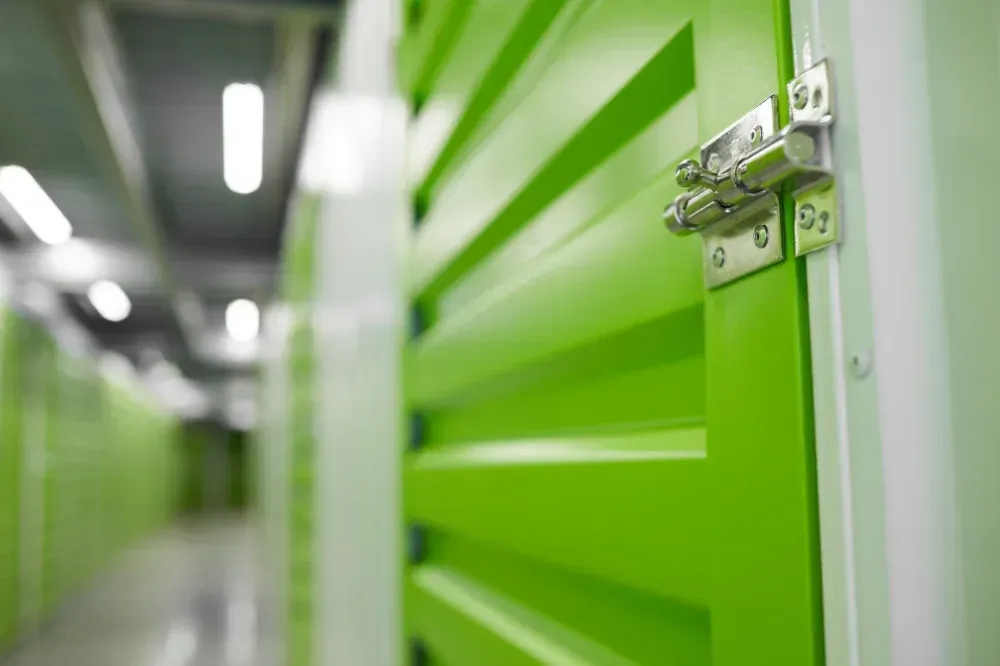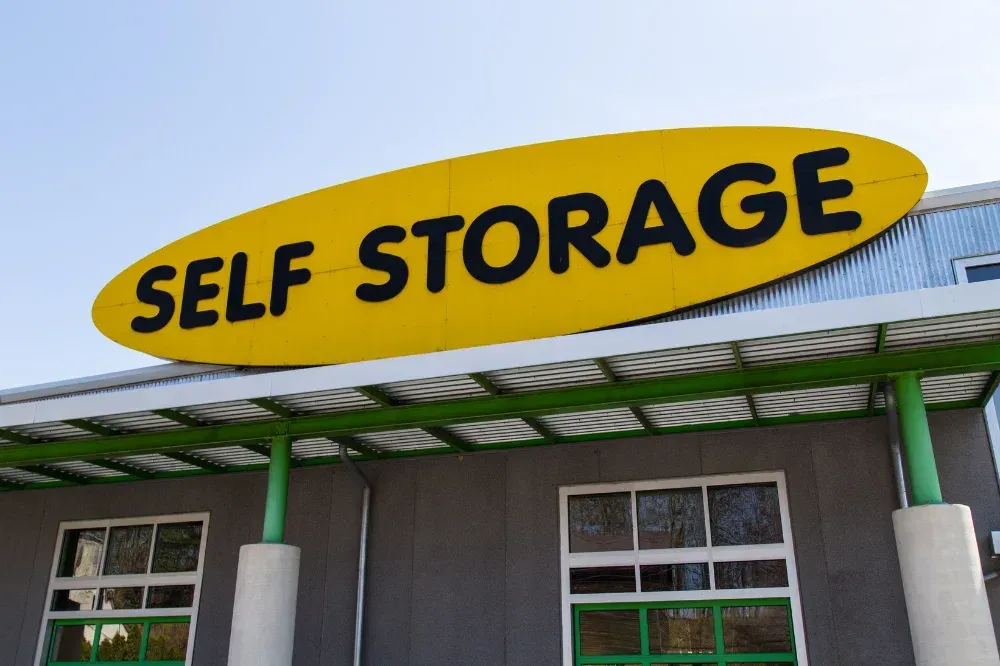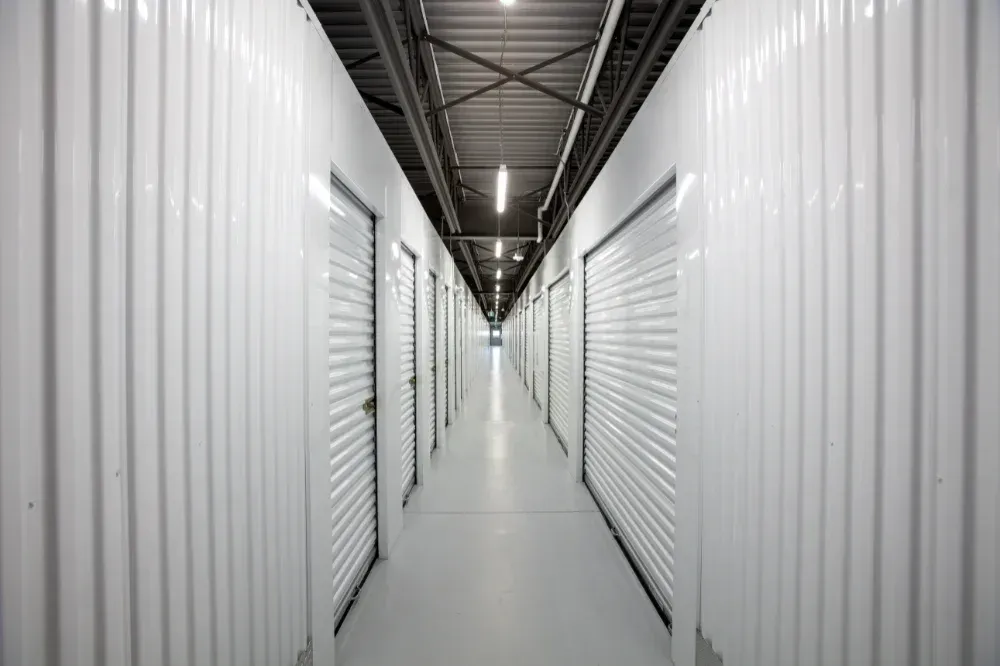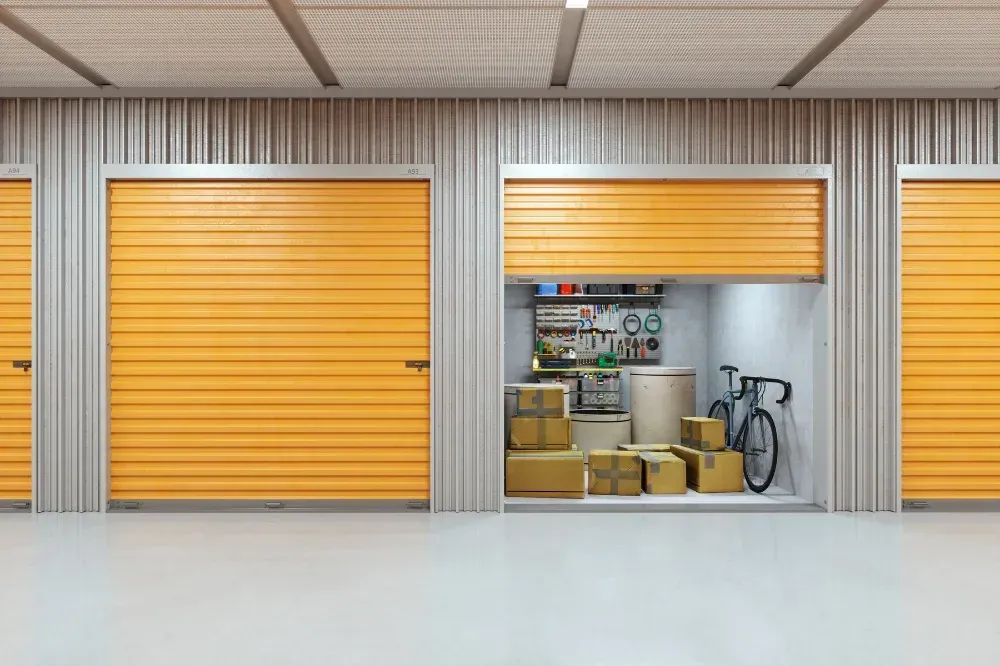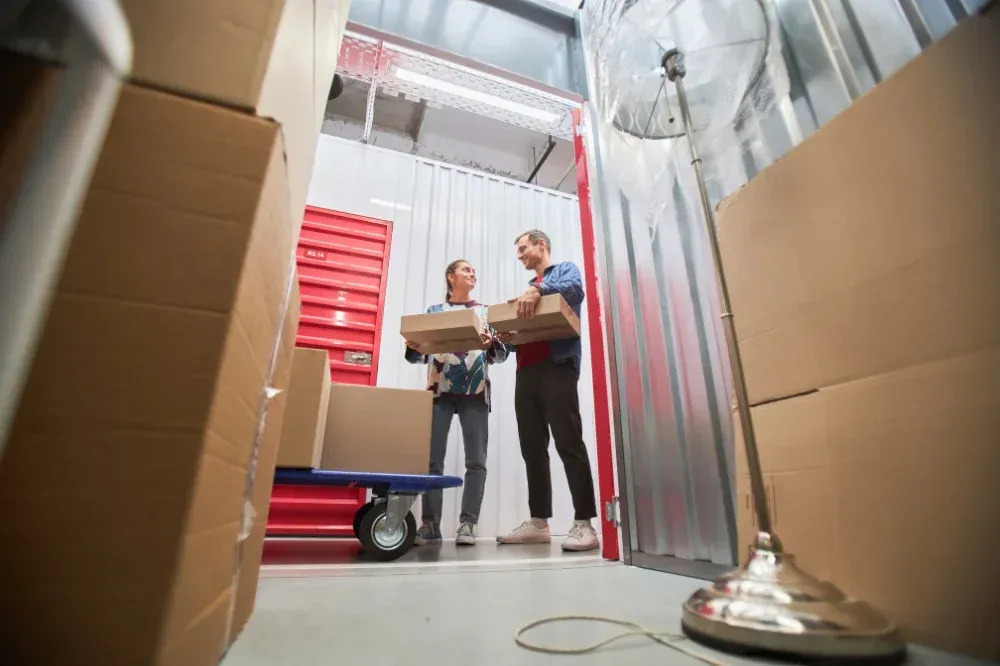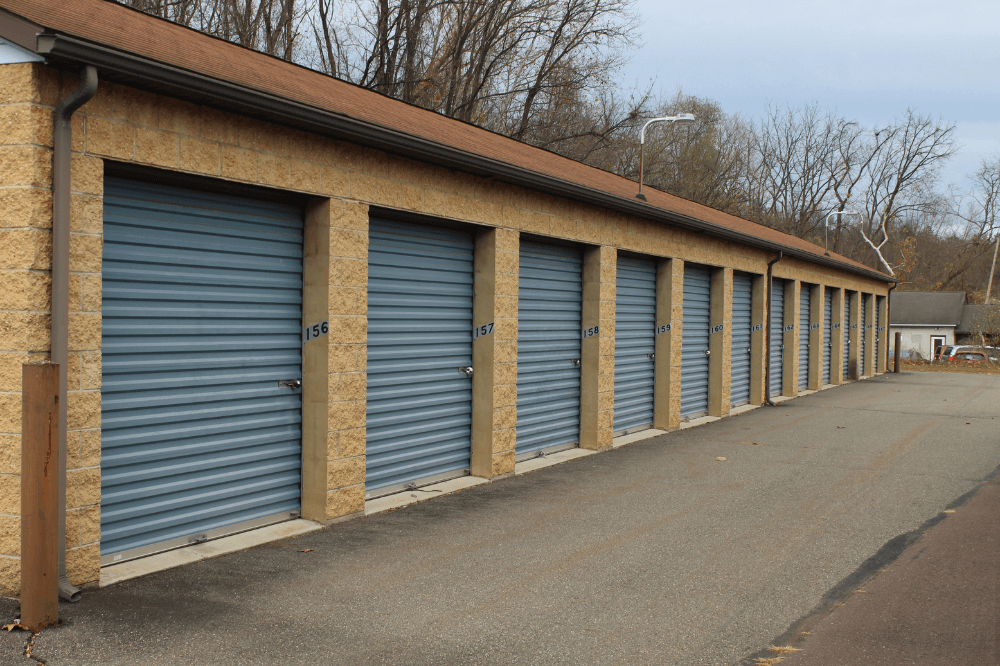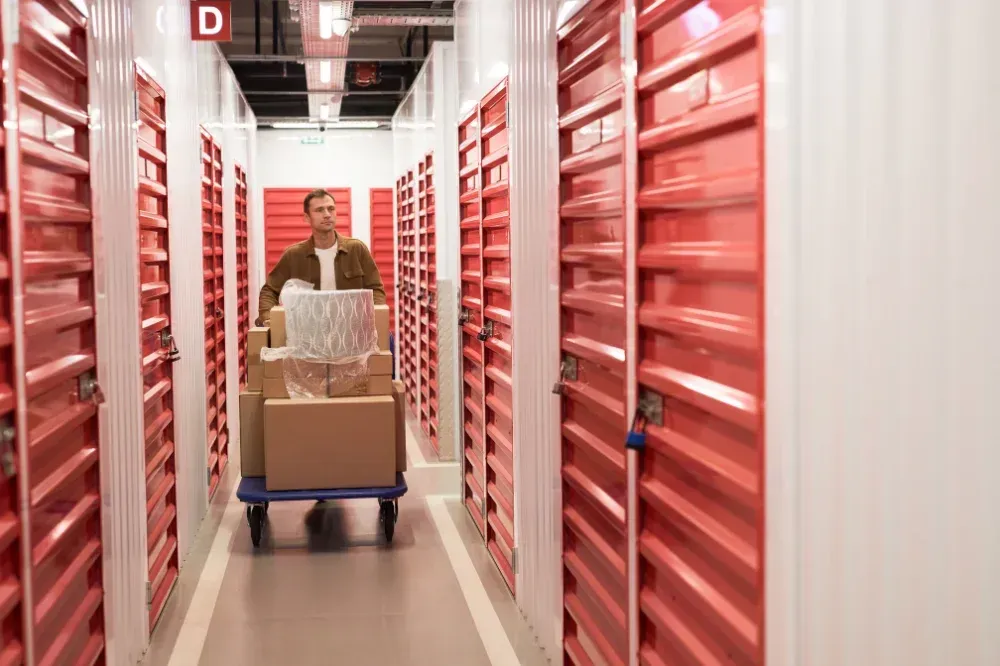How to Pack and Protect Fragile Items for Storage
How to Pack and Protect Fragile Items for Storage
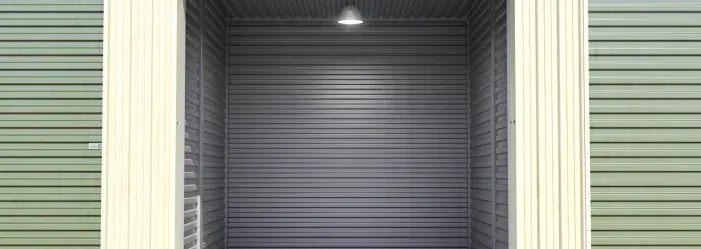
When storing fragile items, proper packing is essential to prevent damage and ensure their longevity. Whether you're packing delicate glassware, electronics, or sentimental keepsakes, using the right techniques can save you from costly breakages.
Importance of Properly Packing Fragile Items
Fragile items require extra care during storage, as improper packing can lead to cracks, chips, or total breakage. Well-packed items remain intact, even if they are moved or stacked. The right materials and methods create a protective barrier against pressure, impact, and environmental factors.
Common Mistakes to Avoid
Many people make common packing errors that put their fragile belongings at risk. These include:
- Using oversized boxes that allow items to shift
- Not providing enough cushioning between objects
- Wrapping items too loosely or too tightly
- Forgetting to label boxes as "fragile"
- Storing items in unstable or damp conditions
By avoiding these mistakes, you can significantly reduce the risk of damage and keep your valuables safe.
Choosing the Right Packing Materials
The right packing materials act as the first line of defense for your fragile items. From cushioning to proper containment, selecting the right supplies is key to ensuring protection.
Bubble Wrap vs. Packing Paper
Bubble wrap and packing paper are two of the most common materials for protecting fragile items, but each has its advantages:
- Bubble wrap provides excellent shock absorption and is ideal for glassware, ceramics, and electronics.
- Packing paper is softer, making it perfect for delicate items like fine china, picture frames, and antiques. It prevents scratches without adding bulk.
A combination of both materials often provides the best protection.
Best Types of Boxes for Fragile Items
Choosing the right box is just as important as the cushioning inside. Consider these options:
- Double-walled cardboard boxes – These offer extra durability and strength for heavy or highly fragile items.
- Small to medium-sized boxes – Overloading large boxes increases the risk of items shifting or collapsing under their weight.
- Partitioned boxes – Ideal for storing glassware, stemware, and other delicate items separately.
Additional Padding Materials
Besides bubble wrap and packing paper, consider using:
- Foam inserts for cushioning delicate electronics or collectibles
- Packing peanuts to fill empty spaces and prevent movement
- Soft cloths or towels for an eco-friendly alternative to padding
Preparing Fragile Items for Packing
Before placing fragile items into boxes, a few preparation steps can further ensure their safety.
Cleaning and Drying Items Before Packing
Dust, dirt, or moisture can cause long-term damage to fragile materials. Always clean and dry items before packing to prevent stains, mold, or corrosion.
Disassembling Delicate Parts
If an item has removable or fragile components—such as lamp shades, glass panels, or detachable handles—disassemble them before packing. Wrap each piece separately to prevent pressure points that could lead to breakage.
Labeling Each Item
Proper labeling ensures careful handling and easy unpacking. Mark boxes with:
- "Fragile – Handle with Care" labels
- Arrows indicating the correct upright position
- A brief description of the contents (e.g., "Glassware," "Porcelain Dishes")
This helps movers or storage facility staff handle the items cautiously and ensures you can quickly identify them when needed.
Packing Techniques for Maximum Protection
Using the right packing techniques is just as important as choosing the right materials. Proper wrapping, layering, and filling prevent breakage and keep fragile items secure in storage.
Wrapping Individual Items
Each fragile item should be wrapped separately to prevent direct contact and potential damage. Follow these steps:
- Start by wrapping delicate items in packing paper to prevent scratches.
- Add a layer of bubble wrap around each item for extra cushioning.
- Secure the wrapping with packing tape, but avoid taping directly onto the item.
- For extra protection, consider double-wrapping particularly fragile objects like glassware and ceramics.
Layering Inside the Box
Layering items correctly inside a box provides stability and prevents pressure from causing damage.
- Place a cushioning layer (bubble wrap, foam, or soft cloth) at the bottom of the box.
- Heavier items go first, followed by lighter, more delicate pieces on top.
- Use dividers or cardboard sections for added separation, especially for glassware and dishes.
- Add a final layer of padding before sealing the box to absorb any impact.
Filling Empty Spaces to Prevent Movement
Even the smallest gaps in a box can allow items to shift and break. Use:
- Packing peanuts to fill gaps without adding too much weight.
- Crushed paper or foam sheets for a snug fit around odd-shaped items.
- Soft fabric like towels or clothing as an eco-friendly alternative for extra cushioning.
A properly packed box should have little to no movement when gently shaken.
Specific Packing Tips for Different Fragile Items
Different fragile items require specific packing techniques to ensure maximum protection.
Glassware and Ceramics
- Wrap each piece individually in packing paper, then add bubble wrap for shock absorption.
- Use cell boxes or dividers to keep glasses and mugs from clashing.
- Place items upright instead of stacking them flat to minimize pressure.
Electronics and Gadgets
- Use original packaging if available, as it’s designed for the item’s safety.
- Wrap screens and delicate parts in anti-static bubble wrap to prevent damage.
- Place small accessories like chargers or cables in labeled bags and secure them inside the box.
Artwork and Picture Frames
- Cover the surface with glassine paper or plastic wrap to prevent scratches.
- Wrap in bubble wrap, focusing on the corners, which are most vulnerable.
- Use flat boxes specifically designed for artwork and frames.
Mirrors and Glass Panels
- Apply masking tape in an “X” shape across the glass to minimize shattering risk.
- Wrap in foam sheets or thick blankets before securing with bubble wrap.
- Store vertically instead of flat to reduce pressure on the glass.
Antique and Delicate Furniture
- Disassemble any removable parts like legs, doors, or drawers.
- Wrap edges and corners in foam padding to prevent chips.
- Use moving blankets for large furniture pieces to protect against scratches.
Securing Boxes and Labeling
Once everything is packed, securing your boxes properly ensures they remain intact during storage or transport.
Best Sealing Methods
- Use heavy-duty packing tape to seal all openings and reinforce the bottom of the box.
- For extra security, apply two to three strips of tape across the top and bottom seams.
- Avoid using duct tape or masking tape, as they don’t provide strong adhesion over time.
Labeling for Easy Identification
- Clearly write the contents of each box on multiple sides.
- Indicate which room the items belong to (e.g., “Kitchen - Glassware”).
- Use color-coded labels if packing multiple categories of items.
Using “Fragile” and “Handle with Care” Stickers
- Place “Fragile” or “Handle with Care” stickers on at least two sides of the box.
- Use “This Side Up” labels for items that must remain upright.
- Consider using bright red or orange tape to signal extra caution.
Proper packing and labeling ensure that fragile items stay safe and make unpacking much easier.
Storage Environment Considerations
Even with the best packing techniques, improper storage conditions can still lead to damage. Choosing the right storage environment ensures long-term protection for fragile items.
Choosing a Climate-Controlled Unit
Extreme temperatures and humidity fluctuations can cause fragile items to deteriorate over time. A climate-controlled storage unit is ideal for:
- Glassware and ceramics, which can crack due to temperature changes.
- Electronics, which are sensitive to heat and moisture.
- Wooden or antique furniture, which can warp in high humidity.
- Artwork and photographs, which can fade or develop mold.
If a climate-controlled unit isn’t an option, store items in a dry, insulated space away from direct sunlight.
Avoiding Moisture Damage
Moisture is one of the biggest threats to fragile items in storage. To prevent damage:
- Use silica gel packets or moisture absorbers inside boxes.
- Store items on raised pallets to avoid potential water damage.
- Ensure the storage area is well-ventilated to reduce humidity buildup.
- Avoid using plastic wrap directly on items, as it can trap moisture and cause mold.
Proper Stacking Methods
Stacking boxes the right way prevents crushing and shifting, which can lead to breakage. Follow these best practices:
- Heaviest boxes on the bottom, lightest on top to avoid crushing delicate items.
- Place fragile boxes on shelves or elevated surfaces to prevent accidental impacts.
- Use sturdy storage racks for added stability and accessibility.
- Keep pathways clear to prevent accidental bumps or falls.
Checking on Stored Items Periodically
Regularly inspecting your stored fragile items helps prevent damage from going unnoticed.
How Often to Inspect Items
- Check items every few months, especially if stored long-term.
- Inspect seasonal items before and after use.
- After extreme weather changes, verify that humidity and temperature haven’t affected your storage space.
Signs of Damage and How to Handle Them
When checking stored items, look for these warning signs:
- Cracks or chips in glassware and ceramics → Reinforce wrapping and ensure boxes are stable.
- Dust buildup or discoloration on artwork and antiques → Clean gently and use protective coverings.
- Warping or rust on electronics → Move to a drier environment and consider using dehumidifiers.
- Mold or mildew on fabrics and furniture → Remove affected items, clean thoroughly, and improve ventilation.
Addressing issues early prevents further deterioration and keeps items in top condition.
Conclusion
Properly packing and storing fragile items is essential to preserving their condition and preventing costly damage. By choosing the right materials, using effective packing techniques, and ensuring a safe storage environment, you can keep your valuables secure for the long term. Regular inspections and proper labeling also make retrieval easier, saving time and effort.
With these strategies in place, your fragile items will remain well-protected whether in short-term or long-term storage.
FAQs
What is the best way to pack glassware for storage?
Wrap each glass individually in packing paper, then add a layer of bubble wrap for extra protection. Store them in a partitioned box, placing glasses upright rather than stacking them flat. Fill any empty spaces with packing peanuts or crumpled paper to prevent movement.
Should I use plastic bins or cardboard boxes for fragile items?
Cardboard boxes with proper cushioning work well for most fragile items, but plastic bins offer better protection against moisture. If using plastic bins, ensure there’s enough padding inside to prevent items from shifting.
How can I prevent mold or mildew on stored fragile items?
Store items in a dry, climate-controlled space and use silica gel packets or moisture absorbers inside boxes. Avoid wrapping items in plastic, as it can trap moisture. Ensure proper air circulation in the storage area.
What is the safest way to store electronics long-term?
Remove batteries and store electronics in their original packaging if available. Wrap items in anti-static bubble wrap and place them in a sturdy box with padding. Keep them in a climate-controlled space away from extreme temperatures and humidity.
How do I ensure my fragile items remain undamaged during transportation?
Use high-quality packing materials, wrap items securely, and fill empty spaces in boxes to prevent movement. Label boxes as "Fragile" and "Handle with Care," and ensure they are stacked properly inside the transport vehicle.

